How Much Omega 3 Per Day Should I Take?
If you pop a daily fish oil capsule – or drink a teaspoon of cod liver oil most mornings – it can be tempting to think you’re all set in the omega-3 department.
But research tells a different story: 4 out of 5 supplement users have low omega-3 levels (1).
Consuming enough omega-3s is associated with a myriad of benefits, from improved heart health to reduced inflammation. But to fully cover your omega-3 needs, it often takes a higher dose than many anticipate to experience benefits.
Exactly how much fish oil are we talking about? Let’s take a closer look at the research, and how to calculate the correct serving size based on your product.
First Things First: Why Is Taking an Omega 3 Daily Dose Beneficial?
Omega-3 fatty acids play many important roles in our bodies. They’re critical for fighting inflammation, supporting your microbiome, keeping your cell membranes flexible, and promoting healthy cell signaling (to name a few key functions) (2, 3).
Because of these effects, scientists have extensively researched omega-3s for a variety of health issues, including cardiovascular disease, mood disorders, pregnancy complications, joint problems, dry eyes, and much more.
What Kinds of Omega-3s Are Best?
The two most important members of the omega-3 family are called eicosapentaenoic acid (EPA) and docosahexaenoic acid (DHA), which are mainly found in oily fish and fish oil.
EPA and DHA aren’t the only types of omega-3 fatty acids that exist. However, they are considered to be the most potent. That’s why almost all omega-3 research in the last 50 years has focused on the health benefits of EPA and/or DHA specifically.
There’s less research about the effects of the plant-based omega-3 – ALA – that’s found in walnuts, flaxseed, and chia seeds. While our bodies have enzymes that convert plant-based ALA into EPA (and to some extent DHA), this conversion rate is negligible (4). For that reason, the strength of an omega-3 supplement is typically only measured by the amount of EPA and DHA it contains.
Not all omega-3 sources are equal: Plant-based omega-3 sources, like flaxseed and chia seeds, do not contain any EPA or DHA.
Most Americans Do Not Get Enough Omega-3s
In spite of the many benefits of omega-3s, an estimated 95% of Americans do not have optimal omega-3 levels (5, 6).
Even regular omega-3 supplement users can be omega-3 deficient, as a study from Grassroots Health demonstrated. Of 494 supplement users, only 19% achieved adequate omega-3 index scores (1).
Why do so many supplement users struggle to get an effective omega-3 dosage?
While the reasons may vary from genetic differences to poor compliance, one big culprit is the surprisingly small servings of EPA and DHA found in most products. Indeed, fish oil capsules typically only contain 10 – 15% the amount of omega-3s used in successful clinical trials!
Fish Oil Dosage Matters
These low EPA/DHA doses are problematic since research demonstrates that the effectiveness of omega-3s depends on the amount consumed.
Research has consistently shown that at least 2000 mg of EPA/DHA daily may be necessary for anti-inflammatory effects (7, 8, 9). Similarly, scientists have estimated that the average American adult needs 2000 mg of EPA/DHA daily to reach a healthy omega-3 index level (10).
For certain conditions – like rheumatoid arthritis and hyperlipidemia – studies typically find that 3000 mg of EPA/DHA daily and up are required for positive results (9, 11, 12, 13).
Dose deception: Dr. Bo Martinsen explains why taking one or two regular fish oil capsules rarely provides enough omega-3s.
How Much EPA and DHA Is In Regular Fish Oil Supplements?
Fish oil capsules often advertise that they provide 1000 mg of fish oil, which sounds like a big dose. That is until you realize that fish oil is only partially made up of omega-3s.
Natural (ie. non-concentrated) fish oils contain a maximum of 30% EPA and DHA combined. With a regular 1000 mg fish oil capsule, that means you’re only getting 300 mg of EPA and DHA per gel cap. Non-concentrated krill oil capsules contain even lower percentages of omega-3s.
Concentrated omega-3 products contain higher levels of EPA and DHA per serving. But even with concentrated capsules, you’d typically have to swallow a small handful of pills to get a meaningful amount of EPA and DHA per day.
How to Calculate Your Fish Oil Dosage
To make sure you get an effective omega-3 dose, check the amount of EPA and DHA per serving listed in your product’s supplement facts.
While the exact levels of EPA and DHA will vary depending on brand and source, the below table shows the normal ranges:
A hard-to-swallow truth: With many omega-3 supplements, you have to down a handful of capsules to get an effective dose.
Fish Oil Capsule Alternatives
Alternatives to capsules are better choices for many people. For instance, fresh liquid cod liver oil makes it easy to get more omega-3s in a few teaspoons (and may be better absorbed by the body as well).
Eating fatty fish – like sardines, salmon and herring – multiple times a week is another great way to get more EPA and DHA. If you go that route, pay attention to whether the fish is wild caught or farm raised, as well as how you prepare your fish (so you don’t lose the majority of omega-3s during cooking) (14).
What’s the Right Omega 3 Dosage for You?
Taking 2000 – 3000 mg of EPA/DHA daily will cover most adults’ omega-3 needs. But other factors – like diet, genetics, lifestyle, age, body weight, health condition, and the bioavailability of the product used – also play a big role (15, 16).
To account for these individual differences, you can take a quick blood test to determine your omega-3 index level. Having an omega-3 index of at least 8% is considered most desirable for heart health.
Can You Take Too Much Fish Oil?
As mentioned above, most people around the world – especially in the USA – get far too little omega-3s. For that reason, there is not much research about whether or not there should be an omega-3 daily intake limit (17).
To date, the European Food Safety Authority has concluded that consuming up to 5000 mg of omega-3s daily is safe (18).
Dose Isn’t the Only Thing That Matters
While getting an effective EPA/DHA dose is one of the most important elements to making your supplement regimen work, you also have to consider the quality of your supplement.
How Fresh Is Your Fish Oil?
Freshness greatly impacts an omega-3 product’s potency and safety profile. Unfortunately, rancid omega-3 oil is a problem, with multiple independent studies showing that many omega-3 products exceed industry freshness standards at the time of purchase (19, 20, 21).
As an omega-3 supplement oxidizes, the amount of EPA and DHA in the oil decreases, meaning you may get less omega-3s than the label suggests.
More concerning are the damaging effects that rancid oil could have on your body. Research indicates that excessively oxidized fish oil may negatively impact cholesterol levels and could have a proinflammatory effect (22, 23, 24).
What’s considered fresh? Peroxide values measure an oil’s freshness level. Generally speaking, the lower the peroxide value, the fresher the oil is.
Is Your Fish Oil Full-Spectrum?
Natural fish oils contain a cocktail of beneficial fatty acids and nutrient cofactors (besides EPA and DHA) that work together to support our health. Unfortunately, many omega-3 products are stripped of this rich fatty acid content through winterization and/or concentration.
Just like drinking filtered orange juice is not as healthy as eating a fresh orange, the more an omega-3 oil is processed, the less potent and bioavailable it becomes (25). This is why it’s important to look for omega-3 products that are non-winterized (full-spectrum) and contain a broader range of fatty acids than just EPA or DHA.
How Long Does Fish Oil Take to Work?
Once you begin taking an effective omega-3 dose, noteworthy results can start to happen. But, keep in mind that increasing your intake of omega-3s is not a quick fix.
Studies show that it can take between 3 to 6 months to saturate your red blood cell membranes with these beneficial fatty acids (26). It is generally recommended to wait 4 months before re-measuring your omega-3 index level.
Feeling the Difference
While getting enough omega-3s from supplements may sound complicated, it doesn’t have to be.
For instance, Omega Cure® Extra Strength delivers 3000 mg of EPA/DHA in single-dose vials without any fishy taste or smell.
Conveniently pre-measured, Omega Cure Extra Strength simplifies the omega-3 dose question. And best of all, you won’t have to keep counting capsules – or teaspoons – of fish oil ever again.
An Effective Omega-3 Dose, Made Simple
Experience the Omega3 Innovations difference for yourself with the most effective fish oil supplement on the market.
Buy Now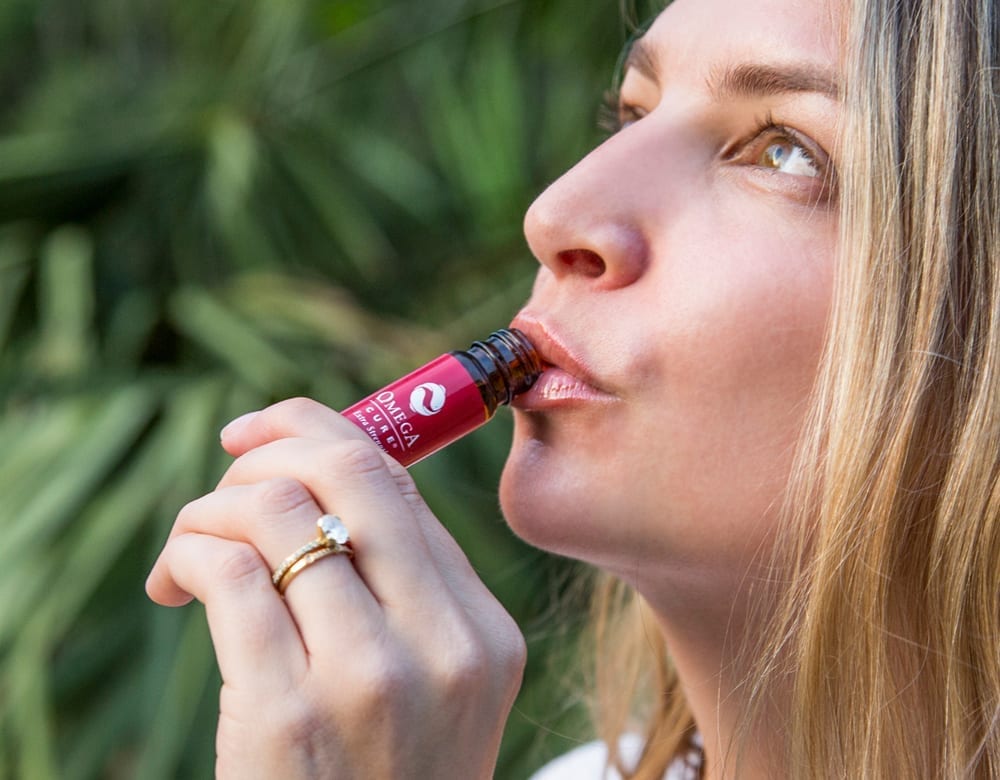
References:
1. Howard, K. (2019, March 12). The Optimal, Illusive Omega-3 Level. Natural Products Insider.
2. Calder, P. (2018). Very Long-Chain N-3 Fatty Acids and Human Health: Fact, fiction and the Future. Proceedings of the Nutrition Society, 77(1), 52-72.
3. Costantini, L., Molinari, R., Farinon, B., & Merendino, N. (2017). Impact of Omega-3 Fatty Acids on the Gut Microbiota. International Journal of Molecular Sciences, 18(12), 2645.
4. Baum, S. J. & Scholz, K. P. (2019). Rounding the Corner on Residual Risk: Implications of REDUCE‐IT for Omega‐3 Polyunsaturated Fatty Acids Treatment in Secondary Prevention of Atherosclerotic Cardiovascular Disease. Clinical Cardiology, 42(9), 829-838.
5. Daniells, S. (2015, December 10). Could Widespread Low Omega-3 Levels Be Putting American Hearts at Risk? Nutra-Ingredients-USA.
6. Stark, K. D., Van Elswyk, M. E., Higgins, R., Weatherford, A., & Salem, N. (2016). Global Survey of the Omega-3 Fatty Acids, Docosahexaenoic Acid and Eicosapentaenoic Acid in the Blood Stream of Healthy Adults. Progress in Lipid Research, 63, 132-152.
7. Calder P. C. (2013). Omega-3 Polyunsaturated Fatty Acids and Inflammatory Processes: Nutrition or Pharmacology? British Journal of Clinical Pharmacology, 75(3), 645–662.
8. Tan, A., Sullenbarger, B., Prakash, R., & McDaniel, J. C. (2018). Supplementation with Eicosapentaenoic Acid and Docosahexaenoic Acid Reduces High Levels of Circulating Proinflammatory Cytokines in Aging Adults: A Randomized, Controlled Study. Prostaglandins, Leukotrienes, and Essential Fatty Acids, 132: 23–29.
9. Fabian, C. J., Kimler, B. F., & Hursting, S. D. (2015). Omega-3 Fatty Acids for Breast Cancer Prevention and Survivorship. Breast Cancer Research: BCR, 17(1), 62.
10. Daniells, S. (2019, August 23). New Study Unlocks the Doses Needed to Achieve an Optimal Omega-3 Index. Nutra-Ingredients-USA.
11. Abdulrazaq, M., Innes, J. K., Calder, P. C. (2017). Effect of ω-3 Polyunsaturated Fatty Acids on Arthritic Pain: A Systematic Review. Nutrition, 39-40: 57-66.
12. Hill, C. et al. (2009). The Use of Fish Oil in the Community: Results of a Population-Based Study. Rheumatology, 48(4), 441-2.
13. DiNicolantonio, J. J., & OKeefe, J. (2020). The Benefits of Marine Omega-3s for Preventing Arrhythmias. Open Heart, 7(1), e000904.
14. Scherr, C., Figueiredo, V. N., Moura, F.A., & Sposito, A. C. (2015). Not Simply a Matter of Fish Intake. Current Vascular Pharmacology, 13(5):676-8.
15. Flock, M. R., Skulas-Ray, A. C., Harris, W. S., Etherton, T. D., Fleming, J. A., & Kris-Etherton, P. M. (2013). Determinants of Erythrocyte Omega-3 Fatty Acid Content in Response to Fish Oil Supplementation: A Dose-Response Randomized Controlled Trial. Journal of the American Heart Association, 2(6), e000513.
16. de Groot, R., Emmett, R., & Meyer, B. J. (2019). Non-Dietary Factors Associated with N-3 Long-Chain PUFA Levels in Humans – A Systematic Literature Review. The British Journal of Nutrition, 121(7), 793–808.
17. (2020, March 25). What Do Your Omega-3 Index Results Mean? OmegaQuant.
18. (2012, July 27). EFSA Assesses Safety of Long-Chain Omega-3 Fatty Acids. European Food Safety Authority.
19. Albert, B. B., Derraik, J. G., Cameron-Smith, D., Hofman, P. L., Tumanov, S., Villas-Boas, S. G., Garg, M. L., & Cutfield, W. S. (2015). Fish Oil Supplements in New Zealand Are Highly Oxidised and Do Not Meet Label Content of N-3 PUFA. Scientific Reports, 5, 7928.
20. Jackowski, S. A., Alvi, A. Z., Mirajkar, A., Imani, Z., Gamalevych, Y., Shaikh, N. A., & Jackowski, G. (2015). Oxidation Levels of North American Over-the-Counter N-3 (Omega-3) Supplements and the Influence of Supplement Formulation and Delivery Form on Evaluating Oxidative Safety. Journal of Nutritional Science, 4, e30.
21. Opperman, M., & Benade, S. (2013). Analysis of the Omega-3 Fatty Acid Content of South African Fish Oil Supplements: A Follow-Up Study. Cardiovascular Journal of Africa, 24(8), 297–302.
22. García-Hernández, V.M., Gallar, M., Sánchez-Soriano, J., Micol, V., Roche, E., and García-García, E. (2013). Effect of Omega-3 Dietary Supplements with Different Oxidation Levels in the Lipidic Profile of Women: A Randomized Controlled Trial. International Journal of Food Sciences and Nutrition, 64(8): 993-1000.
23. Rundblad, A., Holven, K., Ottestad, I., Myhrstad, M., & Ulven, S. (2017). High-Quality Fish Oil Has a More Favourable Effect Than Oxidised Fish Oil on Intermediate-Density Lipoprotein and LDL Subclasses: A Randomised Controlled Trial. British Journal of Nutrition, 117(9), 1291-1298.
24. Albert, B.B., Cameron-Smith, D., Hofman, P.L., and Cutfield, W.S. (2013). Oxidation of Marine Omega-3 Supplements and Human Health. BioMed Research International, 2013, 464921.
25. Dasilva, G., Boller, M., Medina, I., & Storch, J. (2018). Relative Levels of Dietary EPA and DHA Impact Gastric Oxidation and Essential Fatty Acid Uptake. The Journal of Nutritional Biochemistry, 55, 68–75.
26. Neubronner, J., Schuchardt, J., Kressel, G. et al. (2011). Enhanced Increase of Omega-3 Index in Response to Long-Term N-3 Fatty Acid Supplementation from Triacylglycerides Versus Ethyl Esters. European Journal of Clinical Nutrition, 65, 247–254.
Recent Posts
-
Dose, Joint Health, Omega-3
Omega-3 & Pain Relief: Finding the Best Strategy
Are you one among the 1 in 5 Americans grappling with chronic pain, as reported by the CDC [1]? If the thought of traditional pain medications and their potential side...3 months ago -
Eye Health, Omega-3
The Startling Link Between Skin Care and Eye Health
Dry eye complaints are on the rise worldwide. Many risk factors – including aging and increased computer use – help explain the increase. But there's another driver few people know...5 months ago -
Heart Health
Does Taking Fish Oil Lower Cholesterol?
Many people believe that incorporating omega-3s into their diet will solve their cholesterol woes. But the truth is much more nuanced; it's not as simple as taking a daily fish...1 year ago -
Immune Health, Sleep
Melatonin & COVID-19: Can This ‘Sleep Hormone’ Help?
It started with a runny nose and a slight cough. But when his 72-year-old wife tested positive for COVID-19, he got concerned. “Is there any research suggesting the supplements we...2 years ago -
Full-Spectrum Fish Oil, Omega-3
Is It Good to Store Fish Oil in the Freezer?
Fish oil is a great source of the omega-3 fatty acids we all need for good health. It’s also highly perishable. Consuming rancid fish oil can have negative health implications....2 years ago -
Omega-3
Our Favorite Omega-3 Fish Oil Benefits
Omega-3 fish oil certainly has a reputation for delivering a plethora of incredible benefits. And it’s true! Omega-3 fatty acids have been studied for a broad range of health conditions....2 years ago

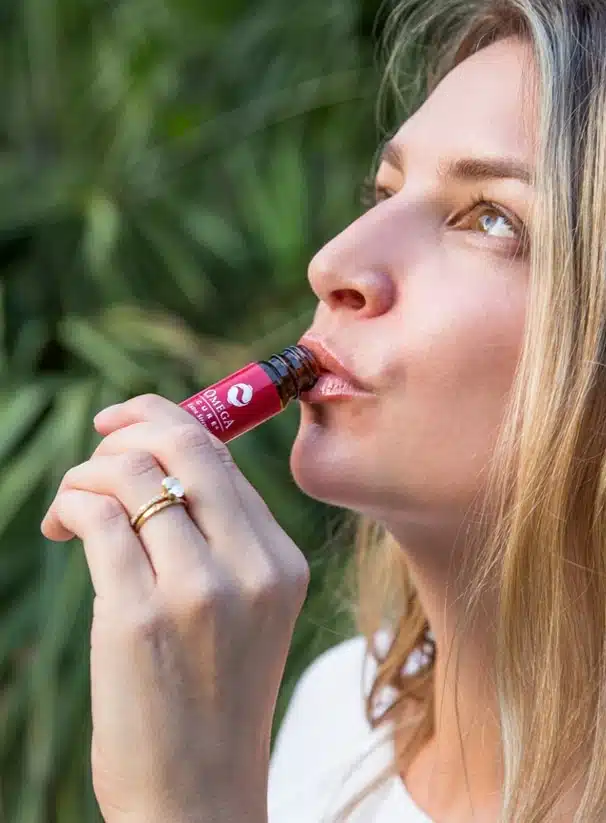
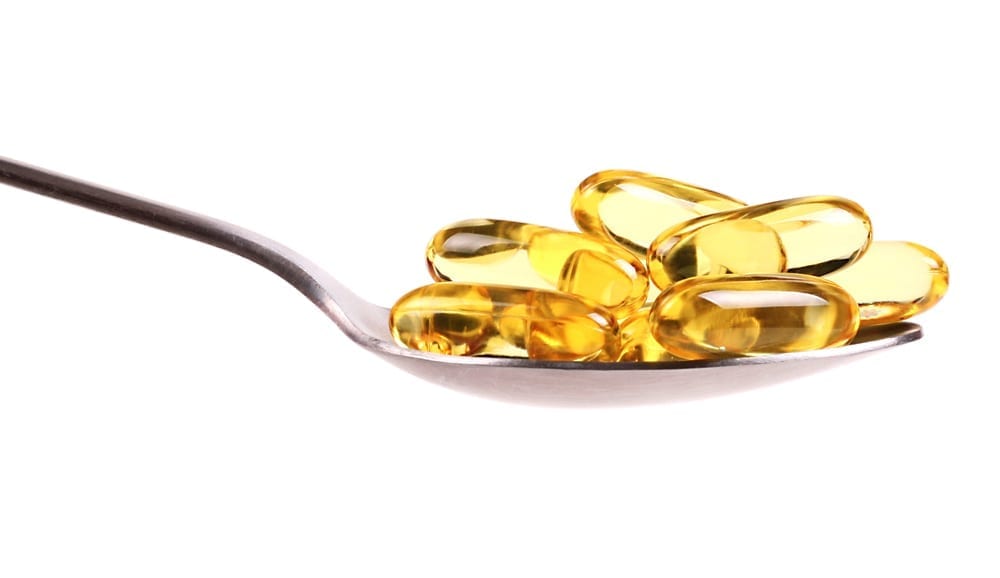

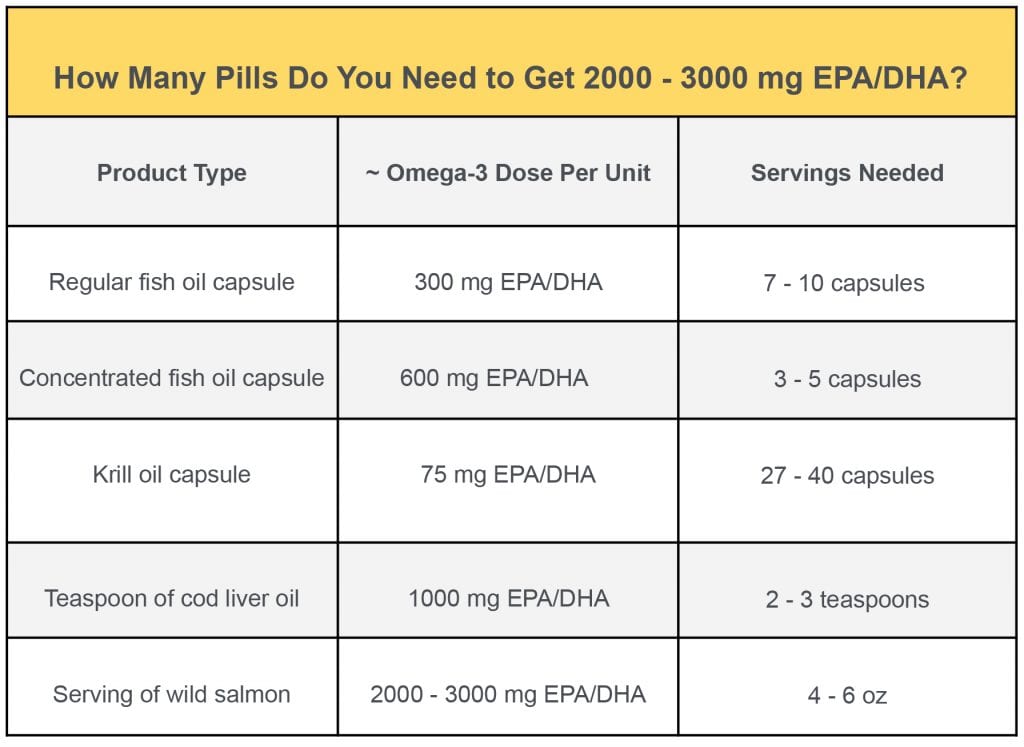
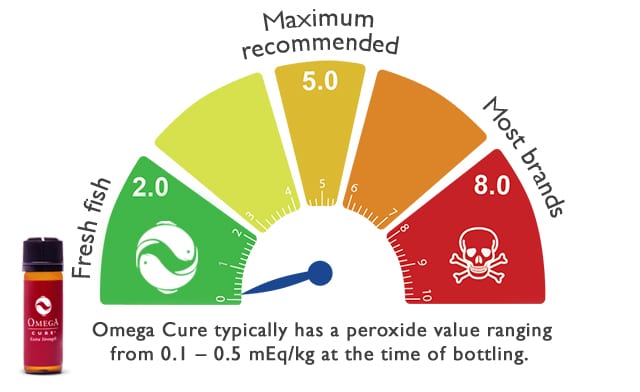

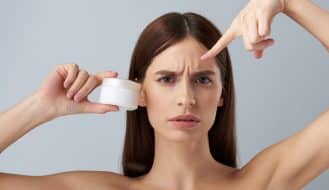
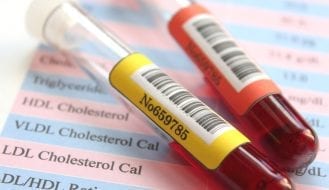
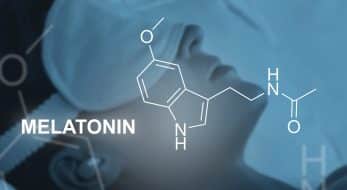


Comments (90)
Thank you, thank you, thank you for listening to people like me who travel. I can’t wait for,the new travel vials to be introduced. How long is the shelf life? Am I right in assuming that they do not have to be refrigerated? Will the green tea be counterproductive to people who cannot ingest caffeine products?
Hi Jane, So happy to hear you are excited about Omega Cure Extra Strength! To answer your questions, we are still testing the shelf life of the vials, and will report back when we have more data. However, our goal is to have them be stable at room temperature for up to one month.
As for the green tea, the vials will only contain very small amounts of caffeine, so it won’t be noticeable for most people. However, we will also be offering vials that feature just regular Omega Cure (without the green tea addition). This way, if there should be a problem, our customers have an alternative.
For treatment of dry eyes,how much omega-3? How long to see a beneficial change in dry eyes?
For treating dry eyes, if you take 15 ml of a fresh omega-3 fish oil consistently every day (that’s 3000 mg of EPA/DHA), you could see results within 4 to 6 weeks (and sometimes faster). If you are interested in learning more, check out our video blog on how soon you can expect to see results from taking Omega Cure: http://youtu.be/gxt7jr-iKsQ
I take Vitamin Shoppe Omega 3. 600 EPA/240 DHA. Total is 1200 mg per capsule. I take 2 in the morning and 2 in the evening. Is this enough? My numbers have slightly increased but I was hoping for better results. I am 6’2 and weigh 250. My bp is perfect but my good cholesterol is lower and I need to raise it. Just started a better diet and been in the gym 5 out of 7 days starting a month ago. Should I take more?
Hi Donnie! How wonderful to hear that you are working out and improving your diet. Those two things alone will make an enormous difference for your lipid profile, so keep going!
To answer your question, it sounds as though you are taking a high enough dose of EPA/DHA. If you have been taking this dosage for the last three months and your numbers aren’t changing, I would examine the quality of your omega-3 product. Since you are taking capsules, it’s highly likely that the oil inside the capsules is rancid. The rancidity factor could explain why you are not experiencing the full benefits of the omega-3. To see if the capsules are rancid or not, I would open them up and taste and smell the oil inside. If it’s foul, let it go. For more information about how to assess the quality of your omega-3 product, look here.
Since your capsules contain 600 mg EPA/240 mg DHA, it also sounds like you are consuming a fish oil product that has artificially high levels of EPA/DHA. We recommend taking a full-spectrum fish oil because it contains all the nutrients of the omega-3 family in the proper ratios. If you are interested, you can read more about full-spectrum fish oil here.
Hope that helps! Let us know if you have any more questions.
Me and my 8yr old daughter are desperately trying to lose weight. Is it safe to give her fish oil..
Hi Cindy! Fish oil is indeed safe for both you and your daughter to consume. The FDA has labeled fish oil as a GRAS food (Generally Recognized as Safe), and in Norway, the government recommends infants consume one teaspoon of fish oil starting at the age of one. As long as you consume a fish oil that is fresh and that is purified (which most high quality fish oils are), then you should both benefit.
Now, while fish oil is not a weight loss cure, it does play a powerful role in promoting weight management. However, the benefits will be greatly improved when coupled with exercise and other nutritious foods, such as whole oats. Hope that helps! Let us know if you have more questions.
Hi, I just brought Nature Made fish oil for the first time and mine is 1000mg-300mg Omega 3. I’m not really sure how to read the EPA or DHA amount on the back of the bottle b/c this is my first time buying them, but it says it has 600 mg total of Omega 3 fatty acid & 500mg of EPA and DHA. How any pills would I need to take per day to help out with depression & anxiety? And also to see for an improvement my skin and hair? Thanks
Hi Nicole,
Thanks for writing! Determining the amount of EPA/DHA in your omega-3 supplement can be tricky, so we’re glad you asked. In a natural (not chemically modified fish oil), the EPA/DHA makes up between 20 to 30 percent of the oil. If you are taking 1000 mg of fish oil, you will get roughly 300 mg of EPA/DHA in that dose.
If it’s a chemically modified omega-3 product, you might get a higher amount of EPA/DHA per capsule. But the EPA/DHA dose would come at the expense of the other types of omega-3 nutrients and co-factors, which are also important for achieving health benefits (check out this blog on full-spectrum fish oil for more information). Does your supplement specify the total amount of fish oil per capsule? We’d need a little more information to help you out with reading the label.
To get clinical effects for mood and inflammation, people typically need more than 2000 mg EPA/DHA per day. It is very important that the oil is not oxidized (rancid) because if it is, it will contain toxic by-products in addition to having low potency. To check for rancidity, cut your capsule open, then smell and taste the oil. Fresh fish oil should have no fishy taste or smell.
We hope that helps! Please let us know if you have more questions.
All the best,
The Omega3 Innovations Team
it is ok for the child has a ASD or autism disorder?
Absolutely, we have a lot of families who buy Omega Cure for their children who are on the autism spectrum. There are a good number of studies suggesting omega-3 helps reduce impulsiveness and even helps improve verbal skills.
For more information, you might be interested in taking a look at the following resource page about special needs:
http://www.omega3innovations.com/special-needs/
You might also want to take a look at the following story from one of our customers who has a son with ADHD:
http://www.omega3innovations.com/omega3-innovations-customer-testimonials/
For children on the spectrum, many of them find that taking unflavored Omega Cure is best – especially if they have food sensitivities. The unflavored Omega Cure has no taste or smell, so you can add it to yoghurts, smoothies, or juices if your child doesn’t like the oily texture.
Please let us know if you have any more questions and we’re happy to help!
You don’t mention Krill oil which is what I am taking – How do you compare it with fish oil? Thanks – Locke
Hi Locke, thank you for your question! We wrote a piece on krill oil a few years ago that you might be interested in reading: http://www.tastyfishoil.com/blog//krill-oil-new-superfood-or-expensive-hype/. We would like to write a follow up blog, however, since the krill oil industry has expanded and we know more about it today. We’ll keep you updated there.
In brief, our main concern with krill oil is dose and rancidity. The average krill oil capsule contains under 100 mg of combined EPA/DHA – a far cry from the 3000 mg of EPA/DHA found in a salmon dinner and the amount used in research studies on omega-3 and inflammation. A recent study showed consumers achieved no benefits from krill oil when taking the label recommended dose. Other studies comparing fish oil to krill oil show both types of supplements achieve the same effect for the same dose – but krill oil still costs 5 to 10 times more.
Besides having a low dose, krill oil is also notoriously rancid, which may compromise the effectiveness of the oil (please see our other blog on this subject).
Omega Cure is the only fresh, full-spectrum fish oil in the world, and when you look at the cost per mg of EPA/DHA, it is a bargain compared to krill oil. We hope this helps! Please let us know if you have any more questions!
Hi I have severe dry eyes and wanted to try out some omega 3 I also don’t eat a lot of fish because I don’t really like it. What would you recommend? Capsules or tea spoon of fish oil? Also what dose? And do you think it would help my dry eyes? And how long would it take to see results thank you
Hi Lindsey! If you have dry eyes, it’s good to hear you are looking to learn more about omega-3 fish oil. There are a number of research studies indicating that omega-3 can make a big difference towards relieving dry eyes (see for instance this study on the subject: http://www.ncbi.nlm.nih.gov/pubmed/24190233).
To answer your question, we recommend you take 3 teaspoons of Omega Cure every day. Three teaspoons of Omega Cure provides a safe and solid dose (equivalent to 12 regular capsules) of the only fresh, full-spectrum fish oil in the world. Freshness is crucial for obtaining good results, but unfortunately, encapsulating fish oil seems to make the oil rancid. A truly fresh liquid fish oil has no taste or smell and can easily be added to juices or yogurt. You should start seeing results over the course of about 8-12 weeks if you take the oil consistently.
Let us know how you do and if you have more questions!
Hi, I have high cholestorl and high blood pressure. Dont want to take statins. How much should I take to lower the cholestrol. I also take soy lecithin. thanks.
If you take 3 teaspoons of Omega Cure every day, it provides a safe and potent dose of the only fresh, full-spectrum fish oil in the world. After 4 to 5 weeks, you can measure the changes of the blood lipids and your blood pressure. Take the triglyceride value and divide by the HDL cholesterol value. If the resulting number is below 2.7, you are in good shape.
For more information, please review my blog “What Your Cholesterol & Triglyceride Numbers Say About Your Lifestyle.”
Thank you so much for your fantastic articles, Can you please advice me on how many tablets of omega-3 should I consume per day?
We’re glad you liked the article. The number of capsules you need depends on the amount of EPA/DHA found in your specific capsule brand. Most people need between 2000 – 3000 mg of EPA/DHA every day. Your capsule should specify not just how much omega-3 it contains, but also how much EPA/DHA the product gives you.
However, if we were going to give you a true recommendation, we would suggest choosing a liquid cod liver oil product, as opposed to capsules. Two to three teaspoons will provide a higher dose, you will avoid ingesting all that gelatin, and you will get a much fresher product than you could ever find in a capsule. A truly fresh fish oil, like Omega Cure, does not have any fishy taste or smell, making it quite palatable to drink. We hope that helps answer your question! If you have others, don’t hesitate to let us know!
I had read that a recent study reported a correlation between fish oil supplementation and increased risk of prostate cancer. Is this something I should be concerned about?
Hi Paul,
Thanks for writing! We understand the concern regarding the increased risk of prostate cancer. The media provided some alarming coverage of that study last year.
Unfortunately, the mainstream media never covered the scientific community’s follow-up discussion of the study, which is too bad because most scientists regarded the conclusion as quite flawed. The study in question never documented whether the men took omega-3 supplements – just the amount of omega-3 in the blood stream. As Dr. Harris, one of the world’s leading omega-3 specialists wrote in a follow-up article, the study participants’ omega-3 index was so low that it is unlikely the men in the trial even consumed fish oil supplements. In fact, the difference between the men consuming the greatest amount of omega-3 and the least amount of omega-3 in the trial might have been as little as two fish meals a week.
Furthermore, the study’s results contradict many other studies that suggest omega-3 has a positive impact on preventing cancer and improving the results of cancer treatments, like chemotherapy.
In the weeks following the release of the study, we put together an Omega-3 and Prostate Cancer Resource Guide for our customers. If you would like to read more about the issue, here it is:
http://www.omega3innovations.com/index.php/science-articles/omega3-and-prostate-cancer-resource-guide/?___store=default
I am taking omega 3 capsules for about four months now it has only 600mg combine is that enough as i am only taking 1 capsule per day as the direction on the bottle recommen
Most omega-3 studies showing measurable health benefits indicate that you need more omega-3 to experience results – typically about 2000 to 3000 mg of combined EPA/DHA. Likely, the current single capsule you are using will not significantly improve your health.
If you have been using your omega-3 capsule for four months now, ask yourself, “Am I seeing a positive health difference.” Especially if you are taking omega-3 for a specific health purpose, like improving lipid levels or reducing joint pain and stiffness, you ought to be feeling a difference in your body or be able to measure the difference with a blood test. If the answer is no, then you should consider finding a liquid supplement that would allow you to get an effective dose.
If you’d like more information about what kind of benefits to look for when using an omega-3 supplement, you can read our latest newsletter, which discusses the topic:
http://marketing.omega3innovations.com/acton/fs/blocks/showLandingPage/a/10957/p/p-004e/t/page/fm/0
Hope this helps! Let us know if you have other questions.
Hi.
I am 26 years old.I have started taking one capsule of Blackmores Fish oil (Omega 3) which is 1000 mg & it says it contains 180 mg EPA and 120 mg DHA. How much omega 3 should i take daily for good results ?
Hi Roy! Thank you for writing and sharing your question. To answer you, most omega-3 researchers agree that you need more EPA/DHA every day in order to see results. For instance, in Fish Oil: What the Prescriber Needs to Know, the researchers wrote the following,
“Although modest increases in intake of n3 LC PUFAs can reduce cardiovascular risk, relatively large doses (≥ 2.7 g/day EPA plus DHA) are required for anti-inflammatory effects. These doses can be taken efficiently and economically as liquid fish oil on juice.”
In other words, if you are really going to see a positive difference for inflammation, you’ll need at least 2700 mg of EPA/DHA per day (or about 9 times as much as you are currently taking). If that sounds like a lot to swallow, consider getting a fresh liquid omega-3 supplement. A truly fresh oil won’t taste or smell bad, and if you take one tablespoon a day, you’ll easily get 3000 mg of combined EPA/DHA.
Even if you are not concerned with inflammation and you are looking at other omega-3 benefits (such as for mental health), research there too indicates you need a higher dose than one or two capsules a day. For instance, if you take a look at the dosages used in these studies, you can see that most used at least 1500 mg of EPA or DHA (or 5 capsules) a day to achieve good results.
Let us know if you have more questions about dosage. We’re always happy to help!
Can you tell me if your product has Reservatol in it? My father has had a stroke paralyzing his left side and causing aphasia. I would like to get him on Omega3 as soon as possible to help not only with brain function but also with muscle loss. However, if Reservaol is an ingredient he will not be able to take it as he is on the highest level of blood thinners possible.
Hi Leann,
We’re sorry to hear about your father’s stroke. It must be a challenging time.
Omega Cure does not contain any Resveratrol. If you would like to take a look at the nutrition facts for Omega Cure or Omega Cure Extra Strength, visit the product pages here and here and then click the nutrition facts button. If you’d like more information about the products, you can also call us at 866.414.0188 and ask to speak with either Dr. Martinsen or Dr. Chalmers.
We also have a blog relating specifically to omega-3 and stroke, if that would be helpful to read: Treating the Injured Brain with Omega-3 Fish Oil.
Is your product halal?
Hi Lina. Omega Cure is not Halal or Kosher certified. However, as a pure cod liver oil, manufactured with equipment solely used to produce Omega Cure, it should meet all halal and kosher requirements.
I am 35 and my daughter is 13 & 7 years old. Currently our fish oil has 1200mg fishgel capsule contains EPA 396mg , DHA 264mg, total omega 3 fatty acids 660mg, vitamin E 2IU.
Fish oil sources, coldwater fish( Anchovy, Sardine & Mackeral. Gelatin source, fish.
How many capsules should we take individually per day? Thank you.
Hi Cindy, Thank you for writing to us. The daily dose necessary for you and your daughters depends a bit on your needs. For instance, for adults with chronic pain and inflammation issues, there’s strong evidence for getting at least 2700 mg of EPA/DHA per day. In terms of your current product, that would mean consuming at least 4 capsules daily to get the correct amount of EPA/DHA. For doses for children, please review this blog for more information.
Another thing to keep in mind with regards to your omega-3 product is the freshness level of the oil. Many capsules contain old, rancid oil. If your current oil is indeed rancid, it may mean that the product contains less EPA/DHA per capsule than listed on the label. Rancid oil may also cause adverse health effects. That’s why we always recommend breaking open your capsules and tasting and smelling the oil first to assess the quality of your product. It’s important to do this, especially if you are giving the capsules to your daughters.
my husband suffers from depression, he takes 4×1500 mg tabs .is that enough?
Hi Judy,
It’s best to talk with your health care provider about the precise omega-3 dose for your husband. But, to provide you with some advice to assess your current capsules:
> Look at the amount of EPA/DHA in those 1500 mg capsules. The EPA/DHA usually only makes up a small component of the 1500 mg total fish oil or cod liver oil, but your label should tell you the precise amount.
> Make sure the oil is fresh by doing a taste and smell check. If the oil inside the capsules is not fresh, get another product for the sake of efficacy and safety.
Is 1250mg EPA + 500mg DHA 3 times a day too much?
If you are taking 1750 mg of combined EPA/DHA three times a day (over 5000 mg of EPA/DHA daily), that is quite a heavy dose. It’s likely not harmful, if you are taking a fresh omega-3 product. According to the European Food Safety Authority, consuming 5000 mg of omega-3s “raises no safety concerns for adults.” However, it’s always best to speak with a health professional to see if that is the best dose for you.
Why do you not state the number of mgs of dha & epa per teaspoon ? You only provide a total’combined amount. Consumers want specific info and you intentionally side step this most important info. Lovaza prescription omega 3 has 480mg epa and 360mg dha per capsule. All other otc manufacturers provide this info. This tells me you are hiding something.
Dear Arnold Kiser, We absolutely list the number of mgs of EPA and DHA per serving of Omega Cure on our website. To find it, navigate to a product page (here’s a link to one for Omega Cure: https://www.omega3innovations.com/store/omega-cure/omega-cure-flavored.html), then click on the tab “Nutritional Information.”
The tab shows our Supplement Facts, which list 1200 mg of EPA, 1800 mg of DHA and 800 mg of other omega-3 per the recommended 15 ml (3 teaspoon) serving. If you want to calculate the amount per teaspoon, divide those values by three.
Please let us know if you need more help finding the information you are looking for. We know our website is dense, and can be tricky to navigate.
Hi, my mom bought fish oil capsules for me the other day. I just consumes it without knowing that taking 3 capsules everyday can give me a good effect or not. Based on the prescription, each softgel capsule contains 1000 mg fish oil (18%EPA/12%DHA). Is it okay that i just need take 2 or capsule per day?
Hi Faren, If you are taking just 2 – 3 capsules of your current product daily, you aren’t getting more than 600 – 900 mg of EPA/DHA. As we explain in the article, the anti-inflammatory benefits of the omega-3s don’t kick in unless you consume at least 2000 mg of EPA/DHA each day. Given that number, your current dose is probably too low to see any concrete results.
If you are interested in getting the full benefits of an omega-3 product, make sure you are getting an effective dose and a truly fresh fish oil. You might also enjoy reading these Customer of the Month stories, which talk about the benefits people experience when they do those two things: https://omega3innovations.com/blog/category/customer-of-the-month/
According to the table provided in this web page, one teaspoon of liquid cod liver oil contains ~ 1000 mg of EPA/DHA. Is it safe to conclude that one can take 7 to 10 capsules of 300 mg cod liver oil (for example, 7 Seas Cod Liver Oil 300mg or Seacod brand 300 mg) as a dietary supplement to achieve daily intake of 2000 – 3000mg Dosage?
Although in India, brands like 7 Seas & Seacod recommends 1-2 capsules of 300 mg thrice a day, most brands in the UK and elsewhere recommends one 1000 mg cod liver capsule per day. I am worried if it is overdose for an adult to take 2 capsules of 300 mg cod liver oil thrice a day. Can you please throw some light on this please?
Hi Shivashankara,
There are few health issues associated with taking fresh fish oil. Studies routinely use large doses without documenting any negative effects, and the European Food Safety Authority (EFSA) has concluded that consuming up to 5000 mg of EPA/DHA per day is safe.
We aren’t in a position to comment on the quality and freshness level of your brand. But in general, the reason omega-3 brands typically recommend just 1 – 2 capsules daily is not because there is harm in taking more, but because that is the dose most people are willing to swallow. You do, however, want to make sure that the product you are taking is fresh because if it is not, you may experience some unpleasant side effects. For more on that, we recommend reading this article:
https://omega3innovations.com/blog/is-your-fish-oil-rancid/
Hi there, I currently take Icelandic cod liver oil in liquid form as you have recommend here. The current brand I use (Im in the UK) provides 920mg of EFA/DHA per teaspoon. However, it also provides 800ug (micro grams) of vitamin A per teaspoon. According to your information here I would need 3 teaspoons per day to see the anti-inflammatory response. However, this would be providing me with 3 times the recommended daily dose of vitamin A (4 times if I include my multivitamin). I am concerned about toxicity from vitamin A and D overdose although the internet is awash with different values.
Can you please advise how someone can get the benefits of cod liver oil without risking toxicity?
Hi Nicolas, It is true that unpurified cod liver oils contain high values of vitamin A. But the amount of vitamin A in a cod liver oil brand will vary significantly, depending on if the oil was purified, the purification techniques used, and if vitamin A was added to the oil by the manufacturer.
For instance, our Omega Cure, which is a uniquely fresh, full-spectrum cod liver oil, contains limited amounts of vitamin A because of how it has been purified. At the moment, our oil is not available in the UK, but if you are unhappy with the amount of vitamin A in your current brand, you might consider exploring other omega-3 options.
This is not comment but a question. On the bottle of fish oil capsule it is written for better health from 3 to 12 capsule daily with food. in the bottle there are 200 capsule. But for how long one should take these capsule. Is this for whole life, or is this for winter season only or is it one bottle once a year. on the bottle this literature is not clear. I am living in Pakistan, here even doctors have no clear concept. Please inform me about the correct doze daily and for how many weeks.
Hi Nisar, This is a tough question to answer because there is no one-size-fits-all solution. However, to answer you generally, most people need to be conscious about their omega-3 intake throughout their life. This is particularly true if you eat a typical Western diet heavy in processed foods and low in fish. That being said, you also need to be concerned about the quality of your omega-3 supplement if you continue consuming capsules. Please read: Is Your Fish Oil Rancid?
Hi ,
can u suggest me whether my 6o years old father can have the omega 3 fish oil capsule or not ?
If yes then what is the recommended serving size ?
We generally recommend that people seek out a fresh liquid omega-3 oil, like Omega Cure, instead of capsules. Liquids are easier to swallow and they make it easier to get an effective daily dose. In addition, Omega Cure is much fresher than the oil you find in regular fish oil capsules. However, for specific recommendations for your father, we advise you to contact a medical professional who can evaluate him in person.
Is your oil purifies to remove mercury ?
Hi Ileana,
Yes, every batch of Omega Cure is purified to remove mercury and other pollutants. After the purification process, it is third-party evaluated in Norway to ensure the oil meets all government and industry standards for contaminants.
Hi there! Informative article, but my doubt is that I am consuming a product of Omega 3 1000 mg capsules (2 per day) which contains around 330 mg of EPA and 220 mg of DHA. How many capsules can i take per day actually? Or is this dose Sufficient to cure skin diseases?
As we discuss in the article, to impact any kind of inflammatory issue, studies indicate that it typically takes a dose of around 2000 – 3000 mg of EPA/DHA per day to see results. That would be about 4 – 6 capsules of your current product daily, given the dosage you described.
That being said, we can’t tell you that swallowing 4 – 6 capsules of your current supplement is going to be effective. As the article also mentions, whether the oil is fresh and full-spectrum will impact results. And additionally, the type of skin disease and individual differences will also play a role.
Hi. How much Omega 3 to take to raise my HDL level ? The total cholesterol, triglycerides and LDL level are OK. Only the HDL is low 35 mg/dl.
Hi Robert! While the triglyceride-lowering benefits of omega-3 supplements have been well documented, the data is less consistent with regards to LDL and HDL levels. Likely, this means that other factors, like the freshness level and the fatty acid composition of the supplement, will have a stronger impact on the results.
That being said, when we survey some of the research on omega-3 supplements and HDL levels, studies have reported modest increases when using doses ranging from 2000 – 4500 mg of EPA/DHA. Most of the studies are in the 4000 mg range.
Woow. One of my capsules contains 70mg of EPA and 45mg of DHA.
Really helpful review.
I’m intrigued with the idea of adequate intake without the pill fatigue, I’ve taken fish oil for years( Life Extension) 4 soft gels yielding 2520 mg EPA and DHA. There’s also sesame lignans, olive extract, krill and astaxanthin. I routinely check my blood levels and found the dosage to be adequate. I have complete faith in the integrity of the life extension products. My daily supplement intake is too extensive to list here. As I mentioned earlier, pill fatigue is wearing me out. Might try you product.
Hello Dr. Spears! Yes, pill fatigue can be a big issue for many people, so that’s a wonderful point to bring up here.
It’s great to hear that you measure your omega-3 index regularly too. It’s important to assess that what we’re doing is working well for us. Let us know if you have any further questions.
I know I’m desperately short of Omega 3 because I have very dry scaly skin and lots of arthritic pain and changes in my joints. Also, I get almost zero Omega 3 in my diet but I do get Omega 6 and 9 from olive oil mostly.
But if I try to add Linseed oil, sardines, fish oil or similar to my diet it just comes right back up again as reflux or burping and tastes foul!
Doesn’t matter if I take it cold as oil or vinegarette in a salad or hot in a meal or in capsule form.
How can I take it so it doesn’t come back up?
Hi Clissa, Thanks for reaching out! It sounds like the omega-3 products that you are trying may be rancid (a common problem, unfortunately). Your omega-3 oil should not taste foul.
We have some great info on how to combat rancidity here.
Also, if you’d like to try Omega Cure®, I think you’ll have a much better experience. Omega Cure does not have much of a taste at all because it’s extremely fresh. Last idea is to add your omega-3 oil to cold foods or take it after a meal, as taking your omega-3s with food will help with absorption.